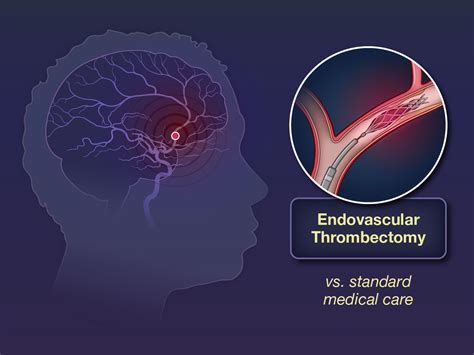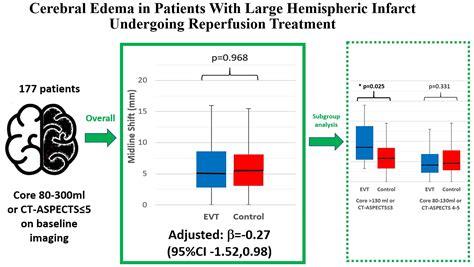hermes stroke | thrombectomy stroke hermes stroke We established a collaborative group to pool patient-level data from these trials: the Highly Effective Reperfusion evaluated in Multiple Endovascular Stroke Trials (HERMES) collaboration. Differences from the TREAT meta-analysis protocol 9 include sampling frame and the primary research question.
Some techniques eat up to three bars of the tech meter. You can upgrade your abilities to recharge the tech bar faster in different ways. These moves are essential to winning battles in Final.
0 · thrombectomy stroke
1 · Hermes meta analysis
2 · Hermes collaboration stroke
Experience Points, or EXP, are a system that drives the advancement of players in the game. All Disciples of War, Magic, the Hand, and the Land receive EXP for a wide variety of activities. Upon reaching a certain threshold, players advance by one level.
In these trials, patients with acute ischaemic stroke caused by occlusion of the proximal anterior artery circulation were randomly assigned to receive either endovascular thrombectomy within 12 h of symptom onset or standard care (control), with a primary .The HERMES collaboration consists of patient-level data from MR CLEAN and 6 other rando.
We established a collaborative group to pool patient-level data from these trials: . We aimed to assess whether the treatment effect of EVT on improved functional outcome in patients with ICA occlusions from the highly effective reperfusion evaluated in multiple endovascular stroke trials . In these trials, patients with acute ischaemic stroke caused by occlusion of the proximal anterior artery circulation were randomly assigned to receive either endovascular thrombectomy within 12 h of symptom onset or standard care (control), with a primary outcome of reduced disability on the modified Rankin Scale (mRS) at 90 days.
We established a collaborative group to pool patient-level data from these trials: the Highly Effective Reperfusion evaluated in Multiple Endovascular Stroke Trials (HERMES) collaboration. Differences from the TREAT meta-analysis protocol 9 include sampling frame and the primary research question. We aimed to assess whether the treatment effect of EVT on improved functional outcome in patients with ICA occlusions from the highly effective reperfusion evaluated in multiple endovascular stroke trials (HERMES) collaboration is maintained in patients with ICA‐I occlusion.
The HERMES investigators concluded that in this individual patient data meta-analysis of patients with large-vessel ischemic stroke, earlier treatment with endovascular thrombectomy plus medical therapy compared with medical therapy alone was associated with lower degrees of disability at 3 months; however, the benefit became nonsignificant .
The study investigators established the Highly Effective Reperfusion Evaluated in Multiple Endovascular Stroke Trials (HERMES) collaboration to undertake meta-analysis of pooled individual patient data. The treatment approach for acute ischaemic stroke is straightforward: restore blood flow as soon as possible and do it as safely and completely as possible. The overlong path to confirming this simple and intuitive treatment plan leads to the HERMES collaboration, the meta-analysis from Mayank Goyal and colleagues—including principal .We aimed to assess whether endovascular treatment (EVT) compared with standard medical care was associated with improved functional outcomes in patients with acute symptomatic isolated intracranial ICA occlusion without involvement of the middle or anterior cerebral artery, that is, ICA-I occlusion.
A difference of 2, 10, and 20 mL in 48-hour lesion volume, respectively, is associated with a 1%, 5%, and 10% absolute increase in the probability of achieving good functional outcome. These results can inform the design of future stroke trials that use 48-hour lesion volume as the primary outcome.
The HERMES collaboration consists of patient-level data from MR CLEAN and 6 other randomized controlled trials comparing EVT with usual care in patients with anterior circulation ischemic stroke: EVT for Small Core and Anterior Circulation Proximal Occlusion with ESCAPE (Emphasis on Minimizing Computed Tomography [CT] to Recanalization Times . The cause of stroke was large-artery atherosclerosis in approximately 44% of the patients in the trial, which led to high rates of intracranial or extracranial angioplasty or stenting. In these trials, patients with acute ischaemic stroke caused by occlusion of the proximal anterior artery circulation were randomly assigned to receive either endovascular thrombectomy within 12 h of symptom onset or standard care (control), with a primary outcome of reduced disability on the modified Rankin Scale (mRS) at 90 days. We established a collaborative group to pool patient-level data from these trials: the Highly Effective Reperfusion evaluated in Multiple Endovascular Stroke Trials (HERMES) collaboration. Differences from the TREAT meta-analysis protocol 9 include sampling frame and the primary research question.
We aimed to assess whether the treatment effect of EVT on improved functional outcome in patients with ICA occlusions from the highly effective reperfusion evaluated in multiple endovascular stroke trials (HERMES) collaboration is maintained in patients with ICA‐I occlusion.
The HERMES investigators concluded that in this individual patient data meta-analysis of patients with large-vessel ischemic stroke, earlier treatment with endovascular thrombectomy plus medical therapy compared with medical therapy alone was associated with lower degrees of disability at 3 months; however, the benefit became nonsignificant .The study investigators established the Highly Effective Reperfusion Evaluated in Multiple Endovascular Stroke Trials (HERMES) collaboration to undertake meta-analysis of pooled individual patient data. The treatment approach for acute ischaemic stroke is straightforward: restore blood flow as soon as possible and do it as safely and completely as possible. The overlong path to confirming this simple and intuitive treatment plan leads to the HERMES collaboration, the meta-analysis from Mayank Goyal and colleagues—including principal .
We aimed to assess whether endovascular treatment (EVT) compared with standard medical care was associated with improved functional outcomes in patients with acute symptomatic isolated intracranial ICA occlusion without involvement of the middle or anterior cerebral artery, that is, ICA-I occlusion.
A difference of 2, 10, and 20 mL in 48-hour lesion volume, respectively, is associated with a 1%, 5%, and 10% absolute increase in the probability of achieving good functional outcome. These results can inform the design of future stroke trials that use 48-hour lesion volume as the primary outcome.
The HERMES collaboration consists of patient-level data from MR CLEAN and 6 other randomized controlled trials comparing EVT with usual care in patients with anterior circulation ischemic stroke: EVT for Small Core and Anterior Circulation Proximal Occlusion with ESCAPE (Emphasis on Minimizing Computed Tomography [CT] to Recanalization Times .

thrombectomy stroke

nike dames witte schoenen
nike dames sportbroeken
Do you want to thrive in FFXIV: Endwalker? If you’re serious about this, then you should work on excelling in powerleveling. If your aim is to level alternative jobs rapidly, these suggestions can all aid you. Levels 60 to 70. It’s critical to do your Duty Roulettes on a day-to-day basis.
hermes stroke|thrombectomy stroke


























